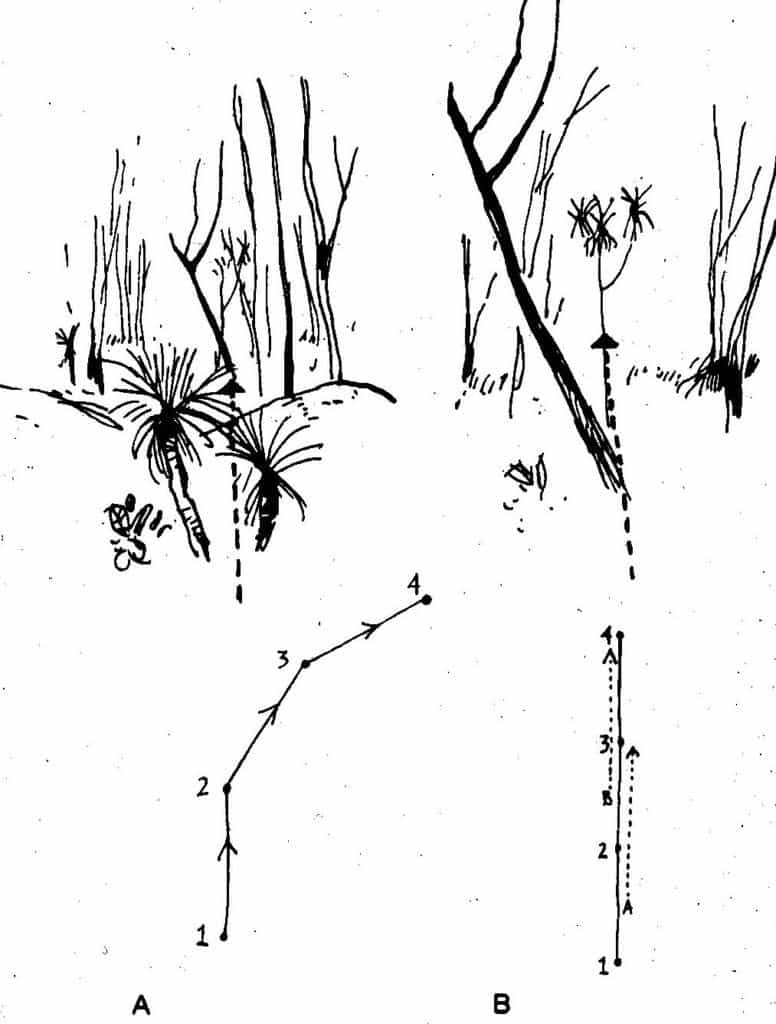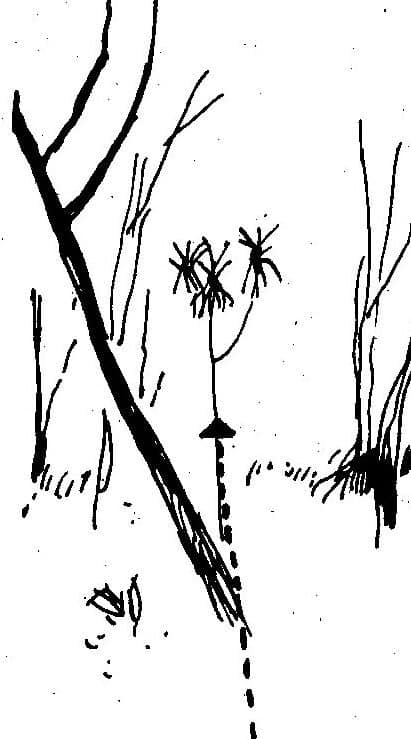You have one leg slightly shorter than the other. Therefore if you are blindfolded you will walk in a circle. Clearly you need some other clue to stop yourself from doing this in the wild. There are a number of ‘tricks’ to learn. I have already mentioned how to use your observations of the ‘lie of the land’ to find your way: http://www.theultralighthiker.com/the-lie-of-the-land/.
I have mentioned before many times how you should train the tools you were born with (which you can count on having with you, hopefully in a working condition) whereas artificial aids (such as GPS, PLB and etc) can all too easily fail. Using the outstanding features of the landscape as a guide to your location is an obvious and necessary skill to develop.
I cannot tell you how many times I have been asked by a person with a GPS in their hand where they are (were), to which my reply has always been (simply looking around), ‘Isn’t it obvious?’
As I have mentioned before it is especially important every time you stop for a breather (at least every fifteen minutes let’s say) to spend that time looking behind you so as to memorise the prominent features of the landscape in your return direction.
Of course there are times when the prominent features of the landscape are not visible (or there simply aren’t many). This can happen in flatter terrain (even on plateaus, in heavily wooded areas, in fog or cloud, etc. Then you need to keep s a sequence of smaller features in mind in order to keep to a chosen route (eg I want to continue in a generally North-Easterly direction until I hit the ‘Divide’).
The most common method used to keep to a straight course is to note a particular tree in the correct direction of travel, and head towards this (Below, top left).

When it is reached a new tree is selected, and so on (above top right).
Although this will lead to a straight line between the trees sighted, it can also lead to a wrong course as shown in figure A
Having arrived at the first tree it is possible for the traveler to sight the next tree incorrectly and so gradually proceed to lose your correct direction.
You can avoid this error as shown in figure B. Moving from point 1 you sight tree 2 and head for it. However before reaching it you line up tree 3. Similarly you sight up tree 4 when you is part way between points 2 and 3, and in this way your line is always correct.
This method is good for open forest country, but does not work on featureless plains. There are two systems that have been common eg among the Aborigines for centuries.
In the first method, one person would always go ahead of the others, heading in the direction of travel indicated. No matter how featureless the country might appear to be, there would always be some small feature, perhaps just a particular clump of grass, beyond the leading person, and as soon as he appeared to be veering off course it would become obvious to those following and they would then signal him back to the correct line.
Many ‘primitive’ people (such as those from the eponymous ‘Canary’ Islands for example) had a ‘whistling language’ for use in such long distance communication. The Canary Islanders could communicate thus at a distance of several kilometers – at least from mountain top to mountain top! it is why the small birds of the same name are so called, not because of their song, but because they sounded like the islanders’ whistling language. One useful feature of such a system of communication is that it does not scare the ‘game’ which is why it was used by so-called ‘primitive’ people who had to rely on the success of their hunt to live.
It is interesting is it not, that ever since the invention of farming (approx 9,000 years ago) the average human brain has been shrinking. The less intelligent can be feather-bedded by the food surplus, whereas in a hunting culture they would simply have failed to reproduce. As they would have starved to death!
The second method could be used by a lone traveler, and consisted of lighting two small fires which would give off a quantity of smoke for some time. The first would be lit at the camp site and you would set out in the required direction. After a short time, and before there was any chance of having altered direction, you would select a clearing and light another fire.
You could now proceed with confidence, knowing that as long as you kept the two smokes in line then you were going in a straight line. If you had a long way to travel you might light more fires as you went on, so that as the original smoke died down you would be able to continue with the directions maintained by the newer ones. Lots of early Australian explorers observed such lines of fires – then began to implement the strategy themselves.
You should also read:
http://www.theultralighthiker.com/finding-your-way/
http://www.theultralighthiker.com/fire-on-the-snow/
http://www.theultralighthiker.com/how-to-light-a-fire-in-the-wet/
http://www.theultralighthiker.com/carry-a-knife/
http://www.theultralighthiker.com/river-crossings/
http://www.theultralighthiker.com/an-open-shelter/
http://www.theultralighthiker.com/how-long-till-sundown/
http://www.theultralighthiker.com/how-to-avoid-being-wet-cold-while-camping/
http://www.theultralighthiker.com/new-ultralight-survival-shelter/
http://www.theultralighthiker.com/survival-still/
http://www.theultralighthiker.com/collecting-water/
http://www.theultralighthiker.com/dehydrated-water/
http://www.theultralighthiker.com/the-twelve-woodlores-ray-mears/
http://www.theultralighthiker.com/if-you-could-only-carry-two-things-in-the-bush-what-would-they-be/
http://www.theultralighthiker.com/inflatable-insulated-clothing/
http://www.theultralighthiker.com/the-importance-of-a-roof/
http://www.theultralighthiker.com/pitching-the-poncho-warning-this-may-save-your-life/
http://www.theultralighthiker.com/fun-with-sticky-tape-mylar-poncho/
http://www.theultralighthiker.com/worlds-lightest-tarp-clip/

